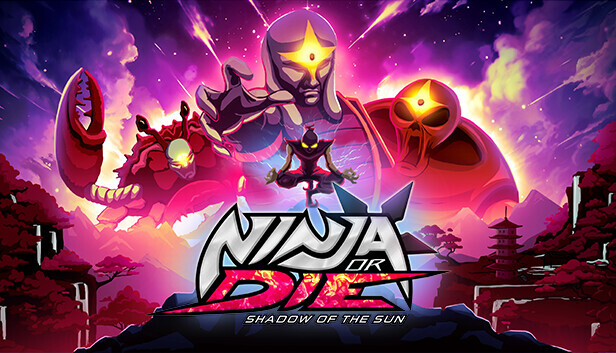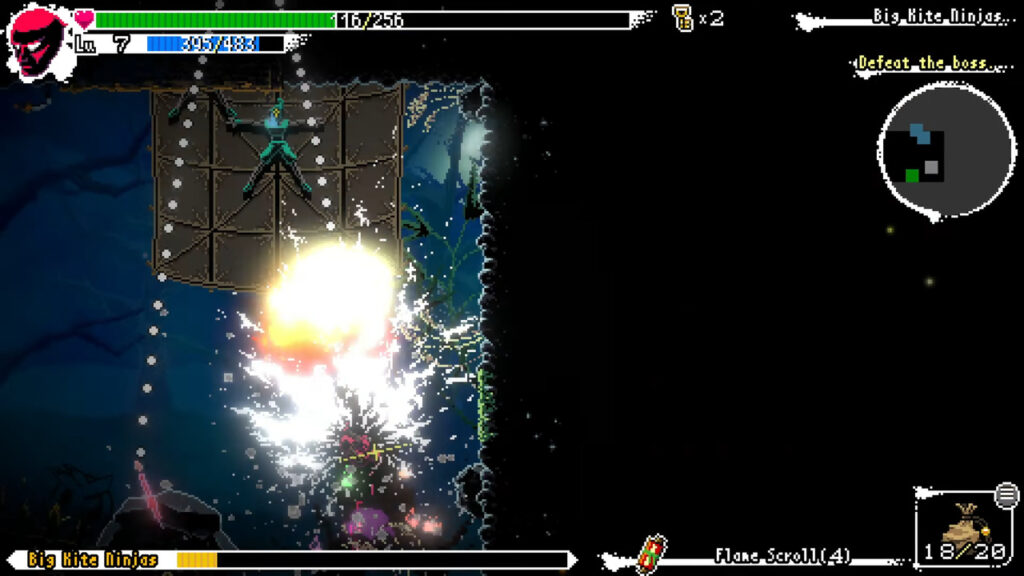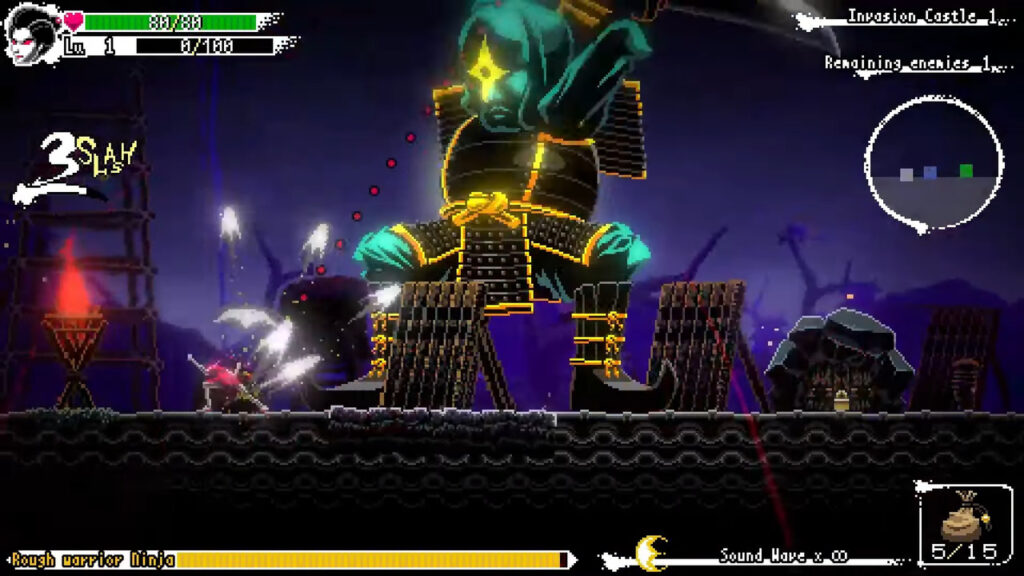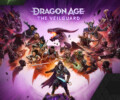
Developer: Nao Games
Publisher: Marvelous
Platform: PC, Switch
Tested on: PC
Ninja or Die: Shadow of the Sun – Review
The Steam page for Nao Games’ Ninja or Die: Shadow of the Sun touts that you only use one button for everything, which is an intriguing concept by itself. After all, this is a roguelike platformer with hack ‘n slash action. When we got to grips with the game, we quickly found that the single-button claim wasn’t entirely accurate but it was still impressive just how much we could do with a single mouse click. It goes to show that a simple concept can really be pushed to the limit. It begs the question of course, whether there is enough substance to what Ninja or Die has to offer or is it too simple for its own good?
Story
As far as its narrative is concerned, Ninja or Die is deliberately vague, and we had to piece things together based on context. When our story starts, the titular ninja is actually a humble pickpocket, but a great cataclysm transforms the world around him, as well as its inhabitants. This event is what gives our newfound ninja his powers, and it is now up to him to save the villagers, who have also been transformed, and return everything back to normal. It’s a premise that’s thinner than what’s left of your enemies when you slice them to shreds, but it works well enough here.
Graphics
Although Ninja or Die makes use of a rather interesting blend of pixel art and modern visuals, we’re honestly on the fence about whether this works as well as the developer intended. The pixelated visuals make use of a limited color palette, reminiscent of ZX Spectrum-era games (and their modern reimaginings), but these are then juxtaposed against full-color backgrounds filled with lush detail. Lighting effects and bloom are then applied to further cement Ninja or Die’s visual identity. The fast pace of the action and the sheer amount of information on the screen at any given time make the game hard to read, however. There is a nigh-constant stream of flashing effects, explosions, and pop-up text on the screen. Combine this with a cluttered interface, and you get a game where the style overpowers the substance to the point that it’s difficult to play Ninja or Die for longer periods.
Sound
As for audio, Ninja or Die sticks to the same faux-retro template as with the visuals. The music sounds appropriately retro, while also keeping up with the high pace of the gameplay. This is further augmented by crisp sound effects that give the on-screen action the appropriate oomph. Voice acting is absent, but given the retro-inspired aesthetics, this shouldn’t come as a surprise.
Gameplay
For as simple of a gameplay concept Ninja or Die is built on, it’s a surprisingly difficult game to explain to someone who hasn’t experienced it for themselves. At Ninja or Die’s core lies a roguelike 2D platformer, where you take control of the titular ninja and fight against yokai. That might not sound like a particularly original idea, but where Ninja or Die sets itself apart is through its controls. The game can be played entirely with just your mouse, should you want to. Rather than the typical side-scrolling action you’d expect based on the premise, you use your mouse to aim where you want the ninja to go, then hold down and release the left mouse button to determine the strength of his jump. Our hero will then wall-hop, in a way not too dissimilar to something you’d expect Spider-man to do, and will automatically deal damage to any enemies he encounters as he makes his jump. Miss your jump or fail to avoid enemies, and you’ll take damage instead. There is of course more to what the game has to offer, but what we’ve just described is around three-quarters of what Ninja or Die’s gameplay is about: aiming and clicking.
Supplementing the easy-to-understand-but-difficult-to-master gameplay are our ninja friend’s tools of the trade. You have a variety of pickups available in each stage, and these range from health-restoring rice balls to shuriken that will deal more damage. Whereas the left mouse button lets you jump, the right mouse button lets you use these items. Then there’s the so-called Mega Jump, which involves charging up your jump before executing it. Said jump is executed in slow motion and lets you deal additional damage to any enemies, and as such is best reserved for more powerful assailants. Despite the simplicity of the action, there is plenty of strategic thinking to sink your teeth into. Add to this that there are multiple playable characters to choose from here, as well as a village that expands as you rescue more villagers, and you’ll notice there is a lot more depth to Ninja or Die than you’re initially led to believe. We’re still on the fence, however, on whether these additional layers of complexity were necessary or if the game should have just focused on sticking to the basics.
It’s in those very basics that the cracks show. Ninja or Die’s core concept is a fantastic idea in theory, though the execution left some things to be desired. When your game is built around a single, rather simple gameplay mechanic, you need to make sure that you absolutely nail that mechanic and unfortunately, that isn’t the case here. The issue is that the mouse-only controls feel wildly inaccurate, and most of the time we were simply praying that our ninja would land in the vicinity of where we wanted him. We switched to playing with a controller rather quickly, and although this did seem a smidge more accurate, there was still plenty of room for improvement. Hopefully, this is something that will be dealt with in a future update. Given that the game is built around quick reflexes and leaves little margin for error, this did leave us feeling frustrated, especially when we just spent some time with the fantastic 30XX’s tight and responsive controls. That’s not to say that Ninja or Die is unplayable in its current state, but right now it feels more of a showcase of the potential the game has rather than capitalizing on it.
Conclusion
While we could definitely get behind Ninja or Die’s concept, its actual execution felt messy. Controlling the ninja and his allies with just a mouse was a great idea, but in practice, wall-hopping felt wildly inaccurate. While there definitely is plenty of good to say about the game aesthetically, those neat-looking visuals do make the game feel cluttered and hard to read. All in all, we would have vastly preferred a more focused and toned-down version of Ninja or Die. It’s not a bad game as is, but it could have been so much better.









No Comments